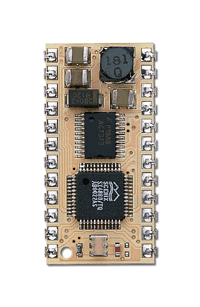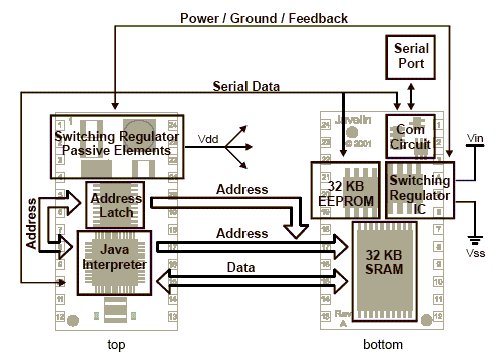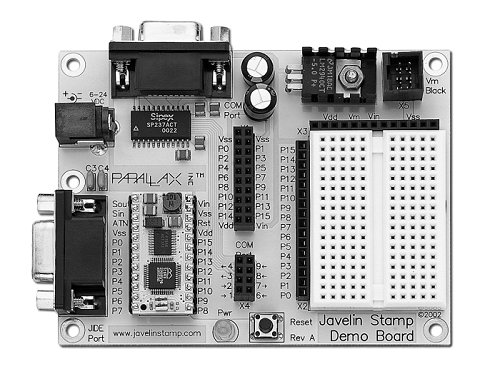
| Home : Course Map : Chapter 24 : |
|
Javelin Stamp
|
| JavaTech |
| Course Map |
| Chapter 24 |
|
IntroEmbeddedJava |
| About
JavaTech Codes List Exercises Feedback References Resources Tips Topic Index Course Guide What's New |
|
The Javelin derives from the popular Basic Stamp series of microcontrollers but it runs programs written in Java instead of Basic. The Javelin Stamp comes as a 24-pin DIP package that holds an interpreter created with the Ubicom SX48BD microcontroller chip. The chip translates Java bytecodes (actually, a subset of them) into the SX48 instructions executes them. The module includes 32kb of non-volatile EEPROM and 32kb of RAM. Programs are stored in the EEPROM and loaded into the RAM for execution. The RAM holds the program's stack and heap. Programs can access both free RAM and EEPROM space. The processor executes up to 8000 instructions/second. Sixteen digital-to-analog and analog-to-digital conversions, general-purpose input/output pins can provide serial I/O, pulse modulated output and pulse input. The serial interface provides for programming the module. Programs are saved in the EEPROM and program execution begins after a reset. Virtual Peripheral (VP) objects run UARTS, pulse width modulators, timers and other services and use minimal system resources. The company offers a development system with an IDE for developing, downloading and debugging programs on the module. Block diagram of the Java Stamp. (Parallax) The module runs a downsized version of Java. Differences from the core language include:
The elimination of the GC was required because it would otherwise interfere with real-time services. However, this means the programmer must be very careful to avoid overflowing memory with objects. We will give examples of programming the Javelin later. The Javelin has attracted developers who are adding to the module's capabilities. For example, a floating-point package has been developed for the module. See also reference Williams for a presentation on offering TCP/IP communications for the Javelin using the PPP (Point to Point Protocol) over a modem.
Javelin Stamp Evaluation Board
The next section discusses programming the Javelin Stamp. References and Web Resources
Latest update: Dec. 14, 2004 |


